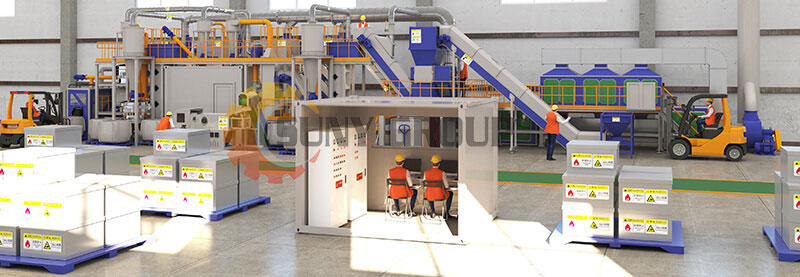As a representative of modern high-performance batteries, lithium-ion batteries are widely used in the fields of consumer electronics, new energy vehicles and energy storage, and their demand and market scale continue to expand. Especially with the rapid development of the new energy vehicle industry, the scrapping of waste power batteries will bring environmental risks and waste of resources, which is not conducive to the sustainable development of the industry. And waste lithium-ion batteries are different from general solid waste. From the perspective of structure, the cathode and anode materials of common lithium-ion batteries usually contain valuable resources such as cobalt, lithium, nickel, copper and aluminum, and the content of the components is relatively certain, even exceeding the resource content of natural ores.

Whether it is from the perspective of reducing environmental pollution, ensuring resource supply, or from the sustainable development of the new energy vehicle industry, lithium-ion battery recycling technology has become one of the current research hotspots and focuses in the field of solid waste treatment and its recycling. Moreover, the positive electrode of lithium ion battery contains more valuable metals and has higher value. From the point of view of recovered products, lithium and cobalt with higher value and frequency of use are the focus of valuable metal recovery. From the current point of view, the key points of resource recovery technology for lithium-ion batteries can be divided into pretreatment process, wet recovery, fire recovery and regeneration process.
At present, the physical-mechanical regeneration and recovery method is mostly used, that is, through the collection of waste lithium-ion batteries - pretreatment, discharge - detection, classification, screening - dismantling, crushing - recovery process - regeneration, preparation 6 steps. Specifically, it needs complete technical support and equipment manufacturing. After many debuggings, the lithium battery recycling production line is finally put into use.

The advantages of using the physical-mechanical regeneration method are as follows:
1. Select the new lithium battery recycling equipment, fully consider the coordination between the various operation steps in terms of production process and equipment selection, and make a reasonable match according to the amount of reacting materials, reducing the running, running, dripping, dripping, etc. in each production link. Leakage and other defects.
2. Each main equipment is equipped with frequency conversion equipment, which can save 10-15% of electric energy, reduce mechanical equipment failures, and save energy consumption while ensuring continuous production;
3. Realize automatic operation. On the one hand, the automatic control improves the stability of the device and the overall average yield; on the other hand, the extensive use of automatic interlock protection, online analysis, and safety control instruments greatly improves the safety of the device.

SUNY GROUP has invested a lot of energy in the research and development of lithium battery recycling, and currently has a complete set of lithium-ion battery recycling solutions. And through cooperation with many customers at home and abroad, the experience is also more abundant, and the relevant lithium battery recycling production lines can be customized according to the needs of customers. If you need or are interested, you are welcome to contact us at any time.
Thank you for your interest in suny group. If you want to learn more about our E-waste recycling plant, copper wire recycling machine and other machines, Contact us now to find out what we can do for you next project!E-mail:sunymachine@gmail.com | Whatsapp:+8613674945231